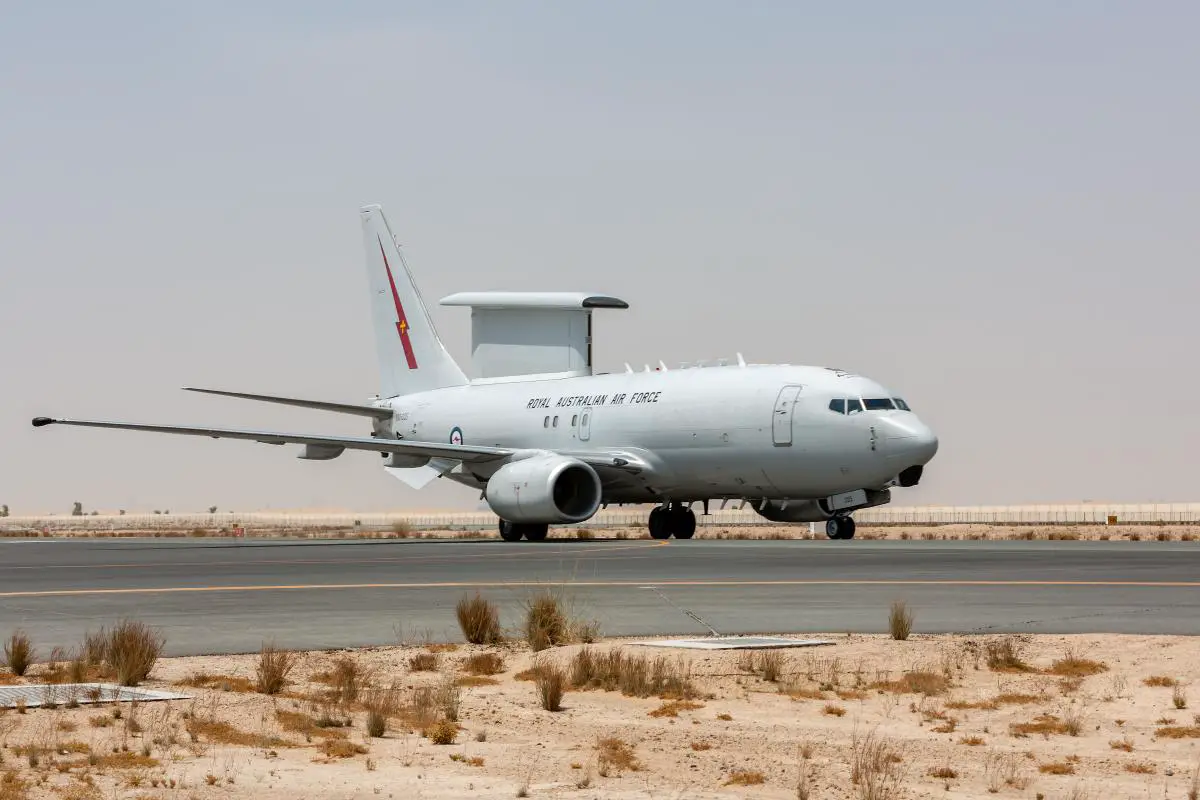Royal Australian Air Force (RAAF) E-7A Wedgetail aircraft and support personnel have returned to Australia following a successful year-long deployment. The aircraft has been operating in the Middle East region (MER) with Australia’s Air Task Group 630, performing airborne command and control as part of Operation Okra. Australia’s support to Iraq comes at the request of the Iraqi Government and is closely coordinated with a coalition of international partners. Operation Okra is the Australian Defence Force’s contribution to the United States-led global Coalition to combat the Daesh terrorist threat in Iraq.
During operations, the RAAF E-7A Wedgetail was responsible for the command and control of all coalition aircraft in a battle management area (BMA) and crews regularly managed more than 80 combat aircraft at once while in the BMA. Over the course of the operational commitment, all six No. 2 Squadron E-7A Wedgetail’s have been rotated in to supporting operations in the MER since the commencement of operations in September 2014. The support has been significant with more than 550 missions (6900 flying hours) flown over the period. Another significant milestone in the life of the platform was also achieved during operations with a mission sortie of 17.3 hours flown – the longest flight recorded from a Boeing 737 airframe.

Upon reflection, No. 2 Squadron’s (2SQN) success was in part, achieved as result of the ability to overcome challenges in the operational environment. Of note, personnel and aircraft relocated bases twice during operations in the MER; a significant logistic and operational challenge – however capability was maintained throughout the transition period. The ability to perform with excellence, consistently achieving a high rate of serviceability under diverse, demanding and complex conditions was a direct result of professionalism and dedication to duty. 2SQN’s consistent and unwavering was achieved as a result of all categories of personnel combining to create a cohesive and agile ‘team projecting force’ for the operational commander,” Air Commodore Courtney said.
2020 also marks the 10th anniversary of the introduction of the E-7A Wedgetail into RAAF service. A culture of excellence has been the key to decade-long operational effectiveness of Air Force’s highly advanced airborne early warning and control capability, represented through No. 2 Squadron’s achievements in the MER as part of the joint force. Based on a Boeing 737-700, the E-7A Wedgetail combines long-range surveillance radar, secondary radar, passive detection surveillance receivers and tactical/strategic voice and data communications systems. This provides the ADF with its ability to survey, command, control and coordinate a joint air, sea and land battle in real time.













